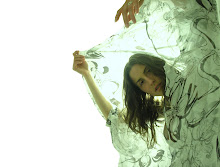Nabokov: On Time and Its Texture
-Vladimir Nabokov
ON TIME AND ITS TEXTURE
We can imagine all kinds of time, such as for example "applied time"-- time applied to events, which we measure by means of clocks and calendars; but those types of time are inevitably tainted by our notion of space, spatial succession, stretches and sections of space. Then we speak of the "passage of time", we visualize an abstract river flowing through a generalized landscape. Applied time, measurable illusions of time, are useful for the purposes of historians or physicists, they do not interest me, and they did not interest my creature Van Veen in Part Four of my Ada. He and I in that book attempt to examine the essence of Time, not its lapse. Van mentions the possibility of being "an amateur of Time, an epicure of duration", of being able to delight sensually in the texture of time, "in its stuff and spread, in the fall of its folds, in the very impalpability of its grayish gauze, in the coolness of its continuum". He also is aware that "Time is a fluid medium for the culture of metaphors". Time, though akin to rhythm, is not simply rhythm, which would imply motion -- and Time does not move. Van's greatest discovery is his perception of Time as the dim hollow between two rhythmic beats, the narrow and bottomless silence between the beats, not the beats themselves, which only embar Time. In this sense human life is not a pulsating heart but the missed heartbeat.


0 Comments:
Post a Comment
Subscribe to Post Comments [Atom]
<< Home